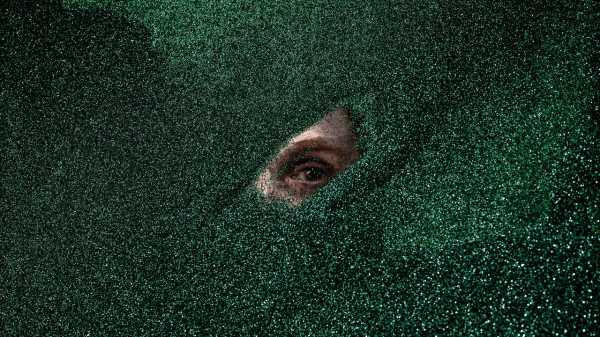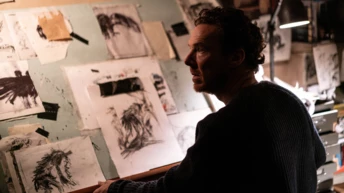
Save this storySave this storySave this storySave this story
Before becoming a writer, I went to college to study international marketing. I had succumbed, like many immigrant children, to the guilt-ridden obligation to “make a living” before pursuing my own vocations. I lasted all of three weeks before dropping out to couch surf and read poems in East Village bars, schlumping my way into a literary life, whatever that meant. But I was in the marketing program long enough to realize one thing: photography is advertising’s central obsession, the form possessing the potential to alter reality while also preserving the sense of the real, making a product appear, for the right price, tantalizingly obtainable, within reach. Marketing also co-opts photography’s long-developed strategies: saturated, extravagant colors, taut compositions, macro-zoomed still-lifes, at times even employing photographers themselves, who export visions of personal projects into visionary corporate campaigns. In other words, beauty, for much of the twentieth century and beyond, has been a method of commercial coercion.

“The Banquet.”
Against this cultural backdrop, Cig Harvey’s work captures a lesser-understood—or even displaced—beauty. While others take photographs, Harvey, I’m convinced, takes something else. This “something else” can be defined by her relationship to the beautiful—what it is, what it can do, and, perhaps more pressing, how it becomes a vehicle for self-knowledge. “The clocks go back, giving an extra hour of sadness,” Harvey writes, revealing the vagus nerve in this new series, which, for all its exuberance and sensual decadence, is centered on loss. The baroque fullness of these images, their rich color and geometry, elicits a felt absence, the phantom limb of elegy made excruciatingly present through an unbridled desire for the world, the living—a book of grief articulated through immense, insatiable want. More than a project of knowing, this is a work of semiotic shifts. Harvey’s recurring motifs, or obsessions, are well-trodden, and not just in photography but in literature, too: flowers, children, food, nature, interiors. Using symbols often ascribed to women as denigrating and minute, effete and decorous (and thereby useless), Harvey, like Sappho, Plath, Murasaki, and Woolf, like Maier, Mann, and Weems, leans into the “domestic” as inexhaustible subversion. She takes the word’s Latin root, domus, meaning “of animals,” and thereby the filth of birthing, rutting, and feeding—associations deemed beneath the offices of men—and treats them as potent and dignified nodes of imagination.

“Storm.”

“Seven Mackerel.”
Still, any familiarity with these typologies is sent to rout by the images themselves. Harvey makes the conventional so strange, so oblique and otherworldly, that her images become unfixed from the cultural wallpaper they’ve been trapped in. The Russian formalist writer Viktor Shklovsky argues that it’s the writer’s obligation not to shun the contrived trope but to rescue it from cultural death via what he calls “estrangement.” The familiar remains so only if allowed to fester in stagnant waters, yet once ejected from its expected context, it comes alive, as in one of Harvey’s photos, wherein a decadent, gemlike cake, one befitting the banquet table of an emperor, gains surprising personhood when shown stuffed into a metal box sitting by a rural riverbank, its whipped frosting visible over the rusted lip. What strikes me in Harvey’s work is not just the compositions; it’s how they reveal her way of seeing, considering, and believing in the world, and how it might be remade. No subject is dead simply because others have depicted it before. Her work, then, is the work of resuscitation via bewitchment. Regardless of the medium, such conviction toward reinvention is difficult, perhaps impossible, to teach. It requires duration and endurance, a stubborn courage even. Much easier, surely, to turn away from familiarity (the untouchable clichés), as many artists have fruitfully done, but much harder to make the familiar so new it feels discovered.

“Cherry Cake.”
Though her work elides reductive categories like “pastoral” or “still-life,” these images fashion a dreamlike, alternative vision of the bucolic which answers the perennial anxiety of photographers, seasoned or novice: What’s there to photograph in the middle of “nowhere”? But it’s from this misconception of “nowhere’s” inherent emptiness that Harvey’s work achieves its formal rigor: the call for the photograph, a medium of surfaces, to reach the subconscious. This Shklovskian displacement is achieved foremost by her daring manipulation of light, or at times the lack thereof, shooting not just in the gold or blue hours but even in the pitch, her fast lens wide open, the frames at once sparked with speckled light and vignetted by obliterating darkness, flipping known locales—orchards, spring-fed heathers, the side of a house—into awestruck nether realms.

“Night Garden.”

“Wisteria.”
Photographing mostly around her home in Maine’s Midcoast, Harvey charges images of rurality with vexed mythologies. The results feel both deliberately made but also inevitably found. Her subjects—a spray of highlighter-yellow pollen on a country road, a cluster of flowers nearly crushed into the ghostly fog of a car window, the occasional family member or neighbor, even a gnomic, dusk-drenched apple tree—appear thoroughly encountered, as if captured upon stepping through a clearing, revealing themselves seconds before the shutter clicks. Herein lies the fantasy of photography: what’s sublimely serendipitous is often carefully constructed, placed, seen and re-seen. The white-clad table strewn with flowers and elegant cakes set out for days is meticulously built, its decay assisted by time, weather, and the weak yet pervasive light of a full moon. In every sense of the word, these photos are made—but they are made in collaboration. Harvey’s frames portray a convergence of human and natural action, not to synthesize or balance the two but to show the possibilities when vision and composition amplify the magic of the natural world through memory.

“Skyline.”

“Five Koi.”
Harvey has tirelessly returned to flowers, children, nature and its decay, and the rhythmic scenes of dailiness through her robust and eclectic career, but this work marks a grander, bolder departure, and comes together in perhaps my favorite of her books thus far, if for no other reason than how it positions the photo book as an ambitiously layered, multifaceted medium, asking it to be more than the armature of images or the hardbound replication of an exhibit. Instead, it’s a work of epistemology punctuated by essays that weave between lyrical, profound, diaristic, and edifying treatises on color and perception, retroactively changing how the images stain the mind as the pages turn, making the book’s “bookness” indispensable to how the images are perceived.

“August Sunset (Emily).”

“Gold Road.”
There’s also a gravitational, sensorial pull to this work. The pictures stop your breath with their use of bold color schemes, but here, too, the seduction is complex, circuitous: the shades across her landscapes appear thrown; lucent koi float in ethereal, near-complete darkness, as though in outer space; the berry-jewelled cake is robed in lustered, chiaroscuro light. Like adverts, these images also coerce, but the product they’re selling is life itself: Harvey’s frames provoke us not to spend money but to spend time, returning us deeper into the world, an experience both plentiful and increasingly difficult to afford.

“Midnight Feast.”

“Gardenias.”
Despite its ethos of charged mourning, “Emerald Drifters” is a rallying cry to exist in our bodies, where all the senses encounter the world. Viewing these images brings to mind an anecdote I once heard and think of often in relation to art: French colonizers, upon arriving in Vietnam in the nineteenth century, were aghast to see gold-clad Buddhas and stupas, porcelain and jade vases and statues, left in the open air, for anyone, even beggars, to touch. How can a people’s finest enaction of craft be left so unguarded, they wondered. Quickly, the conquerors dislodged these treasures and locked them in vaults to be sent back to the empire’s capital and displayed in museums as “relics.” What does it mean to be so frightened by beauty’s power that it must then be plundered and removed, caged? I’ve seen psychological research suggesting that, for some communities in Asia, the touching of religious artifacts has medicinal results that rival the effects of psychotropic drugs. In other words, it reaffirms what artists have known for centuries, and what Harvey so deftly reveals to us here: that beauty, despite being degraded by commerce, or shunned as merely decorous, feminine fussing, heals. It raises the stakes of being so that death—the familiar, eternal trope that it is—becomes so new, so terribly there, that we cannot forget its presence in our living days, and are better for it, drifters that we are.
This is drawn from “Emerald Drifters.”

“Red Theater.”

“Amaryllis.”
Sourse: newyorker.com







